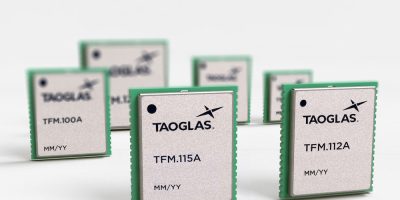Analog Devices has unveiled an expanded version of its developer-centric offerings with new solutions to drive more efficiency and security for developers and provide increased customer value. The CodeFusion Studio System Planner helps customers deliver innovations for the Intelligent Edge with enhanced capabilities and reduced time-to-market. The new Data Provenance Software Development solution establishes a trust framework for data created at the Intelligent Edge, ensuring the data remains trustworthy and preserves its fidelity from creation to consumption or storage.
“The work required of embedded developers is more complicated than ever, from increasingly complex processors to new challenges presented by multiple development teams and a more challenging security environment,” said Rob Oshana, Senior Vice President of the Software and Digital Platforms group at ADI. “We have heard from customers time and again they want to be able to more quickly and easily manage their system design, allocate resources, quickly show proof-of-concept, and do it with data integrity at the edge, all of which inspired this expanded CodeFusion Studio™ System Planner and Data Provenance Software Development solution offerings.”
In recent years, embedded devices have exponentially increased processing speed, core count, functionality, and complexity – delivering reduced cost and space, but increasing the complexity of software development pipelines. Legacy developer tools often lack the flexibility and customisation required to integrate into these pipelines and the established code bases central to effective modern system design. ADI’s CodeFusion Studio System Planner solves many of these project creation and resource partitioning challenges on complex, heterogeneous devices.
Using a permissibly licensed, open-source architecture, ADI’s CodeFusion Studio System Planner enables flexible project creation across multiple cores and graphical resource allocation of memory and peripherals. The offering also includes config tools that are aware of the real-time operating system or firmware platform being used on a given core, exposing context-aware config settings for a peripheral or memory block assigned to a core. With added insight into system performance and accessible, open-source tools to improve resource allocation, developers will have greater ability to efficiently optimise their designs.
Additionally, System Planner enables developers to generate the code they need via a plugin-based project creation system. This system gives developers as much flexibility as possible while benefiting from a common set of configuration tools. A set of plugins for common firmware platforms – Zephyr RTOS, ADI’s SDK, etc. – will be provided out of the box, but customers are free to duplicate and modify those project creation and config plugins for their requirements. The plugin system makes use of a templating engine beneath the surface. Static files are modified by replacing strings in specific locations, and the code generation logic can be augmented with JavaScript or TypeScript functions.
Finally, System Planner provides a graphical utility to partition memory resources, assigning partitions to one or more cores. This utility aims to help customers generate linker scripts or Device Tree memory overlay files. Peripheral blocks can also be graphically assigned to a core, with RTOS-aware config settings.
In addition to the CodeFusion Studio System Planner, ADI is also announcing an upgraded ADI Assure Trusted Edge Security Architecture with the early access release of the company’s first Data Provenance Software Development solution ensuring data trust and traceability for customers across its life cycle.
Now available in early access, ADI’s new Data Provenance solution establishes a trust framework for signal chain data, ensuring that data created at the Intelligent Edge retains its integrity, authenticity, and preserves its fidelity as it moves through the system. The Data provenance solution allows appending secure metadata, enhancing the trust and fidelity of the generated data; fidelity comes from the addition of information about the history of the data across its journey. Trust is established by a strong cryptographic proof, allowing users to assess the authenticity and integrity of their data across complex networks more easily, whether it’s being used for simple dashboard displays or sophisticated machine learning models.
By establishing end-to-end trust and enhancing data fidelity, Data Provenance leads to more accurate and safe model outputs and greater decision-making precision. The immediate applications include building more reliable algorithms or AI models that operate on authentic, high-quality data, extracting verified sensor insights to improve understanding of signal chain outputs and operational reliability, simply reducing data waste, and rendering the proof of integrity and authenticity easier.
Early access kits and software downloads for the solution will be available through https://developer.analog.com/ on 25th April







